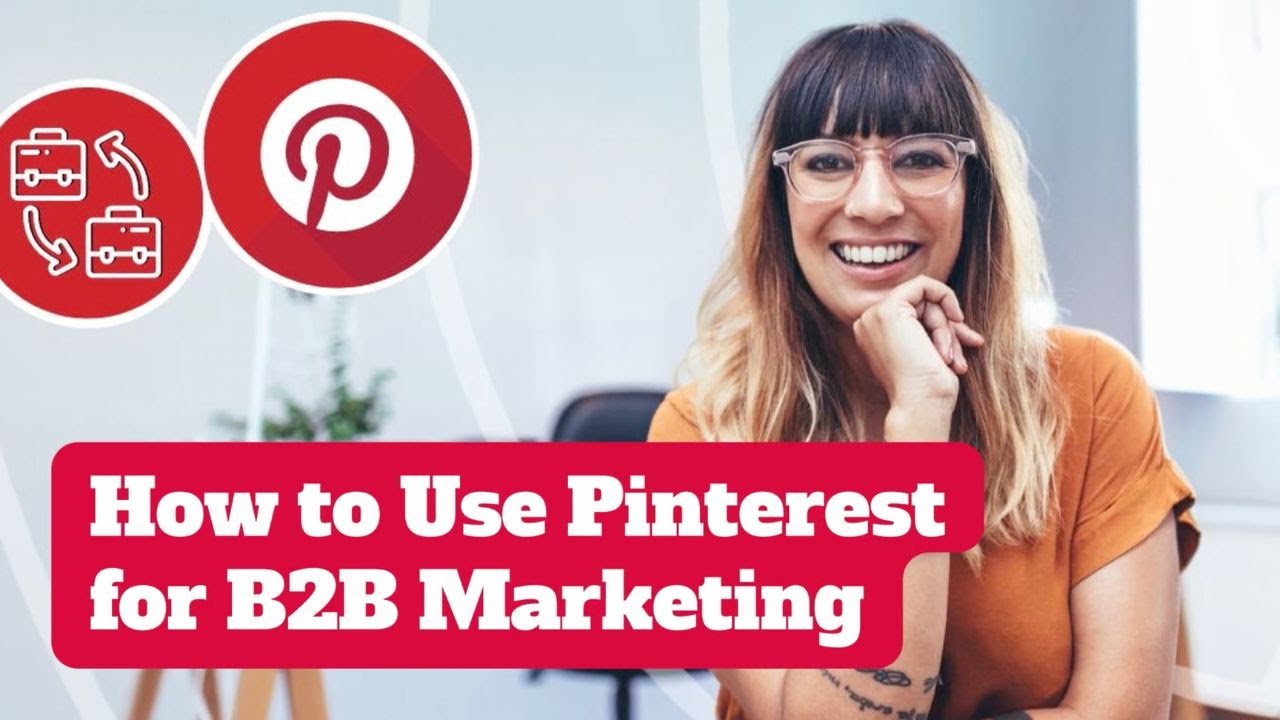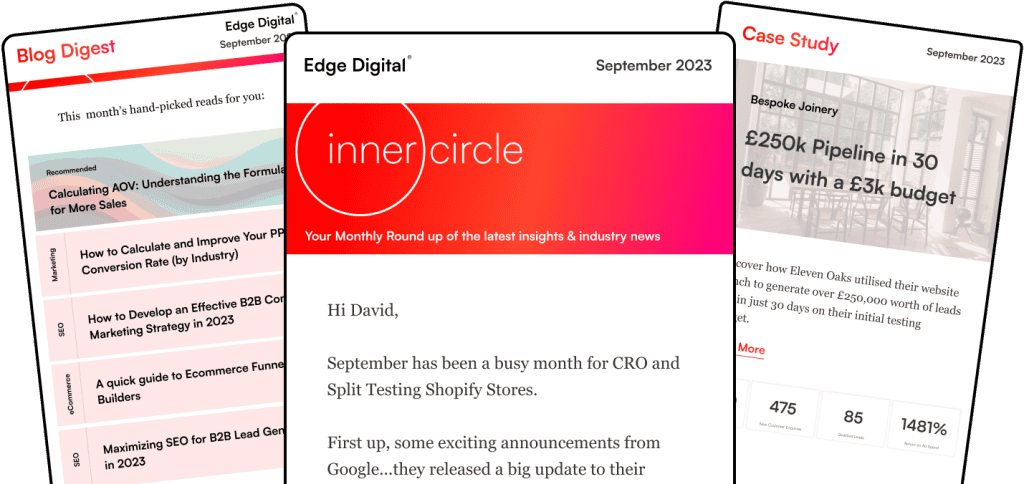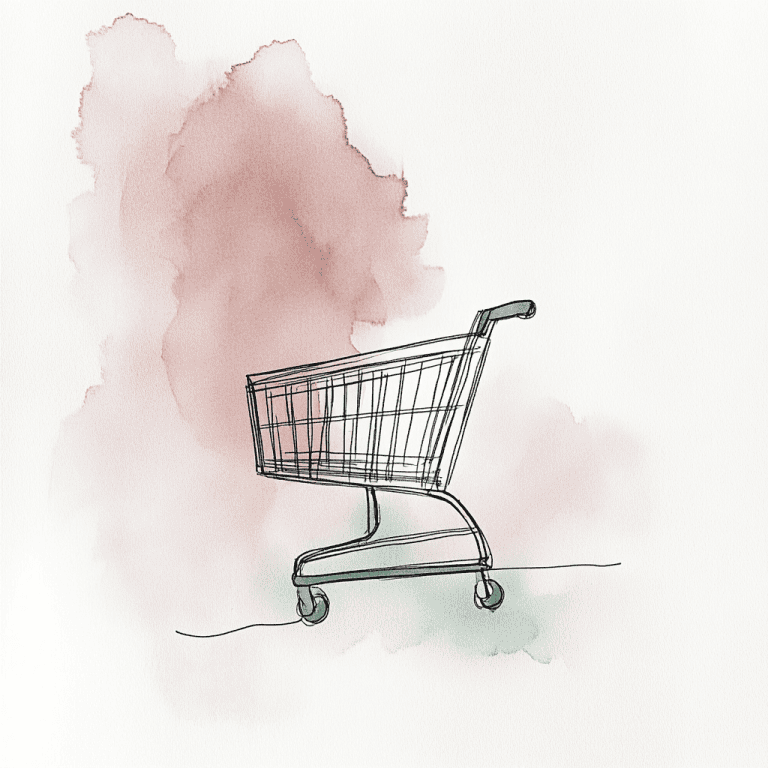Businesses are recognising the unique value of Pinterest as a powerful tool in the B2B advertising arsenal. As a visually driven social media platform, Pinterest offers a creative way to showcase a company’s brand, products, and services.
This can be particularly effective in the B2B space where engaging content is key to standing out. By leveraging Pinterest, we can tap into a platform where decision-makers are already seeking inspiration and solutions.
Developing a B2B marketing strategy on Pinterest involves understanding the platform and how it can be used to target other businesses. This includes creating and optimising pins that attract attention and are also rich in content to drive engagement.
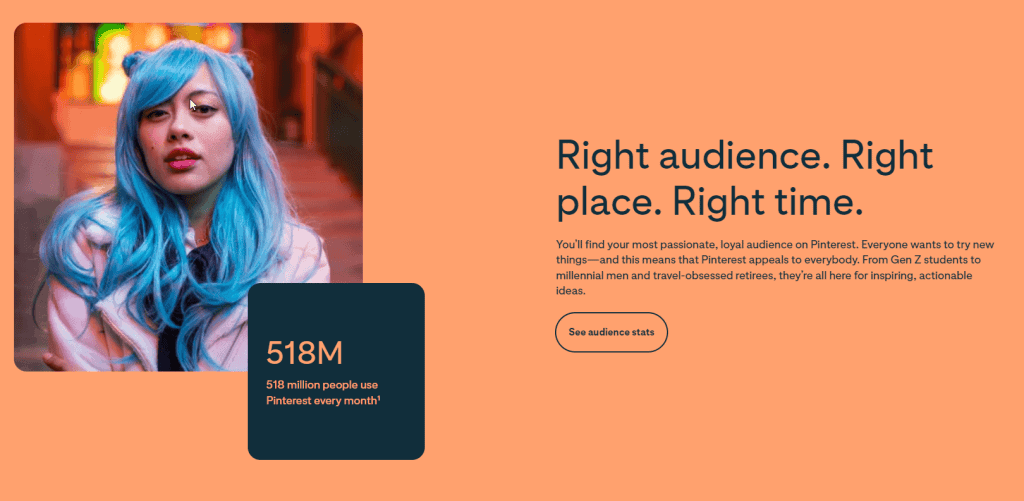
With a potential audience of over 518 Million people, Pinterest represents a large pool of would-be customers to entice, often with lower competition that Meta Ads & Google Ads.
By integrating Pinterest with other digital marketing channels, we can create a cohesive and comprehensive online presence. This approach ensures that all potential touchpoints are covered, leading to better conversion tactics and, ultimately, a measurable impact on our bottom line. Recognizing the potential of Pinterest is crucial for shaping an effective social media marketing strategy.
Key Takeaways
Pinterest is an effective platform for B2B advertising due to its visual nature and engagement potential.
A successful strategy involves creating appealing and content-rich pins tailored for business clients.
Integration of Pinterest with other marketing channels can enhance the overall digital marketing efforts and performance measurement.
Understanding Pinterest for B2B
In our exploration of Pinterest for B2B marketing, we’ll uncover the platform’s unique characteristics and demographics, investigate its visual-centric nature, and guide you through setting up a business account.
What Makes Pinterest Unique
Pinterest stands apart as an inspirational platform where our audience can discover new ideas and products. Unlike traditional social media that’s primarily conversational, Pinterest drives action. Its users are planners, actively seeking to bookmark ideas for future projects or purchases.
Monthly Active Users and Audience Demographics
As of the latest data, Pinterest boasts nearly 450 million monthly active users. Demographically, it’s been observed that the user base spans a broad age range, making it a treasure trove for reaching varied audience profiles.
For B2B companies, we can target professionals who are also likely to be decision-makers.
Pinterest as a Visual Platform
This platform excels in visual content, allowing us to showcase our products and services in a visually appealing way. High-quality images and infographics are the currency here, resonating well with an audience that’s looking to visualize their next business solution.
Creating a Business Account
To tap into Pinterest effectively, we need to create a Pinterest business account. This is a straightforward process that allows us to curate a profile tailored for a professional audience.
Access to analytics and promotional tools becomes available, giving us insights into how our content performs.
Developing a B2B Pinterest Strategy
In this section, we’ll discuss the essential steps to create a successful B2B marketing strategy on Pinterest. We’ll look at setting clear goals, understanding the platform’s algorithm, developing a robust content strategy, and using keywords and hashtags strategically.
Goals and Objectives
We must define what we want to achieve with our Pinterest presence. Are we aiming to increase brand awareness, generate leads, or drive traffic to our website?
Setting SMART goals – specific, measurable, achievable, relevant, and time-bound – is crucial for guiding our strategy and measuring its success.
Understanding the Pinterest Algorithm
To successfully engage with our target audience on Pinterest, we need to understand how the algorithm works. It prioritises fresh, high-quality content and user engagement.
Our content must be designed to encourage saves and shares, which signals to the platform that our content is valuable.
Content Strategy and Consistency
A strong content strategy hinges on consistency. We need to routinely pin content that aligns with our brand and the interests of our B2B audience.
This includes creating and curating relevant infographics, how-to guides, and thought leadership articles. Maintaining a regular posting schedule can help increase our visibility and engagement on the platform. Additionally, integrating blog posts into our content strategy, repurposing them across different platforms like Pinterest, and including strong calls-to-action can enhance engagement and drive traffic back to our site.
Leveraging Keywords and Hashtags
To maximise our content’s reach, we should incorporate relevant keywords and hashtags into our pin titles and descriptions. This can improve our visibility in Pinterest’s search results.
Thorough research on keywords that align with our business and industry will allow us to target our ideal audience more effectively.
Creating and Optimising Pins
In this section, we’ll delve into the best practices for creating and optimising pins that drive engagement and conversions for B2B marketing.
Designing Engaging Visual Content
We understand the importance of High-Quality Visual Content; it’s what catches the eye and encourages further interaction.
Use vibrant and relevant images, ensuring they are well-designed and of high resolution. We aim to reflect our brand’s professionalism and our products’ value through every pin’s visual narrative.
Consistency: Maintain a consistent aesthetic across all pins to enhance brand recognition.
Aspect Ratio: Stick to the optimum 2:3 aspect ratio to ensure our pins look great on all devices.
Writing Effective Descriptions and Titles
An effective pin needs a compelling title and detailed description that harness the power of keywords without sacrificing clarity.
Our titles should be catchy, getting to the point quickly and motivating users to take action.
Titles:
Keep them concise, with a maximum of 100 characters.
Incorporate relevant keywords naturally.
Descriptions:
Use descriptive language with a 500 characters limit.
Include a clear call-to-action.
Utilising Rich Pins and Idea Pins
Rich Pins allow us to provide extra information directly on the pin itself, which can include real-time pricing and availability.
This is particularly effective for B2B as it streamlines the decision-making process for our prospects.
Idea Pins, on the other hand, offer a multi-page canvas to showcase our expertise. They’re an excellent way to share more detailed content such as tips, step-by-step guides, or even stories about our business solutions. Idea Pins can be compared to story-type posts on other social media platforms like Instagram and Facebook, but they offer higher engagement rates and durability.
Idea Pins are a new avenue for promoting thought leadership and engaging directly with our audience on Pinterest.
Content Marketing on Pinterest
In this section, we’ll look at the strategies for crafting and curating content that resonates with our target audience on Pinterest.
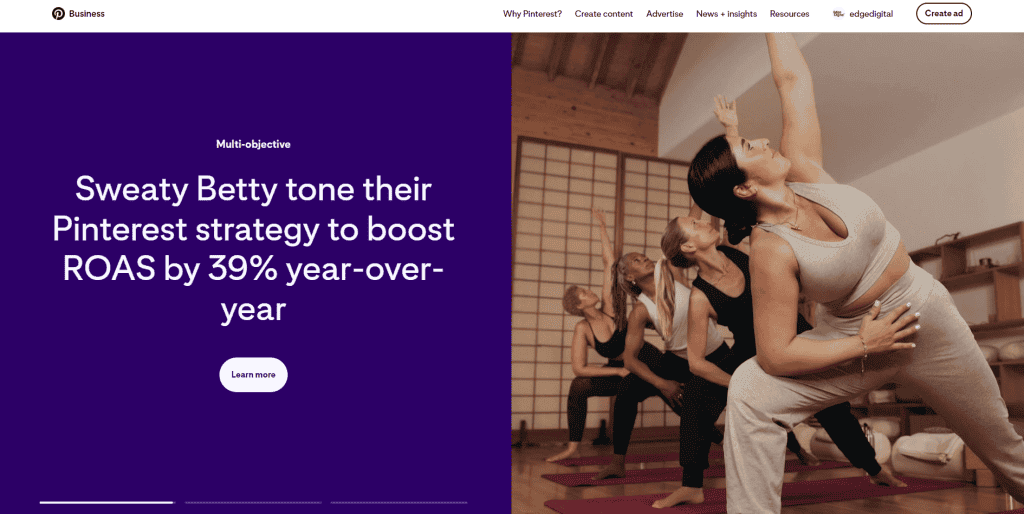
Value-Driven Content
It is crucial for us to produce content that provides tangible value to our audience. We must ensure that every pin and post serves a purpose, whether it’s to inform, educate, or offer solutions to specific problems that businesses face.
By aligning our content with the needs and interests of our target market, we establish a strong basis for successful engagement on Pinterest.
Creating and Managing Boards
Our boards must serve as a comprehensive repository of our content. When creating them, we should focus on themes relevant to our industry, ensuring that they are specific and organised.
The management of these boards involves constant updating, rearranging pins to keep the most valuable and recent content easily accessible, and using accurate descriptions with relevant hashtags to increase discoverability. Additionally, businesses can encourage their customers to create pins, leveraging user-generated content to foster brand loyalty and community. This strategy not only enhances engagement but also attracts potential customers through authentic visual content.
Content Variety: Infographics, Videos and Ebooks
Diversity in our content offering is key to maintaining a dynamic presence on Pinterest. Pinterest is a visual search engine that combines social media elements with a focus on discovery and inspiration.
Infographics are especially effective, condensing data and insights into an easily digestible and shareable visual format.
Videos create a more engaging experience, perfect for in-depth explanations, tutorials or showcasing company culture.
Ebooks, which can be teased with visually compelling cover pins, offer extensive knowledge and thought leadership, driving users to our landing pages.
In every piece of content we produce, our aim is to be helpful, insightful, and readily actionable for other businesses on Pinterest.
Boosting B2B Engagement
In this section, we shall examine the potent strategies essential for elevating engagement on Pinterest, particularly for B2B companies.
Building Brand Awareness
It is crucial for us to leverage Pinterest to enhance our brand visibility. By crafting pins that resonate with our audience, we can increase our brand’s exposure.
Committing to a content strategy that includes relevant and engaging pins feeds into the discoverability of our brand on the platform.
Not only does this help in highlighting our brand’s unique stance, but also positions us as thought leaders in our respective industry.
Fostering Community with Followers
Interaction with followers is the linchpin of sustaining engagement. We must prioritise responding to comments, creating content inspired by user feedback, and engaging with our followers’ content.
This not only nurtures relationships but also encourages a reciprocal engagement, transforming our followers into brand advocates.
Additionally, understanding the types of content that generate the most engagement helps us tailor our Pinterest strategy to meet the desires of our audience.
Collaborating with Other Brands
Allying with complementary businesses and influencers can result in a mutually beneficial surge in engagement for both parties.
By pooling our resources and sharing our audiences, we can extend our reach significantly. Strategic partnerships enable us to showcase our brand to a broader, yet still targeted, demographic.
It’s an effective method to foster brand growth and amplify our message in the digital expanse.
Conversion Tactics for B2B
To effectively harness Pinterest for B2B marketing, we need focused tactics that turn interest into solid leads and drive conversions. Pinterest’s visual platform offers unique opportunities for this, but it requires careful planning and precise execution.
Turning Interest into Leads
The Pinterest algorithm helps us expose our B2B offerings to a wider audience. By leveraging high-quality, actionable pins, we can guide users from mere interest to active enquiries. Our pins should offer value that addresses the specific problems our target audience is looking to solve. This effectively transforms them into potential leads.
Optimising Landing Pages for Conversion
It’s crucial that our pins lead to optimised landing pages. This means having a clear, concise message with a strong call-to-action (CTA). We must also include forms that are simple to fill out and use imagery reflecting the content pinned. Integrating conversion tracking mechanisms will allow us to measure the efficacy of our Pinterest B2B marketing tactics. A/B testing different elements such as the CTA button colour or page layout can result in improved conversion rates.
Analysing Conversion Rate and Adjusting Strategy
Splitting our text into at most two sentences per paragraph will make it easier to read.
Consistent analysis of our Pinterest activities can unveil insights into what content resonates with our audience. Tools like Serpstat can aid in understanding how pins contribute to our overall conversion rate. We need to be prepared to tweak our strategy based on the data. This means refining our approach to content and ads to better meet the expectations and needs of our potential B2B clients.
Advertising and Promotion
In our B2B marketing efforts, we recognise that Pinterest offers a unique opportunity for us to showcase our brand visually and connect with our target audience effectively. Through strategic advertising and promotion, we can enhance our online presence and drive targeted engagement.
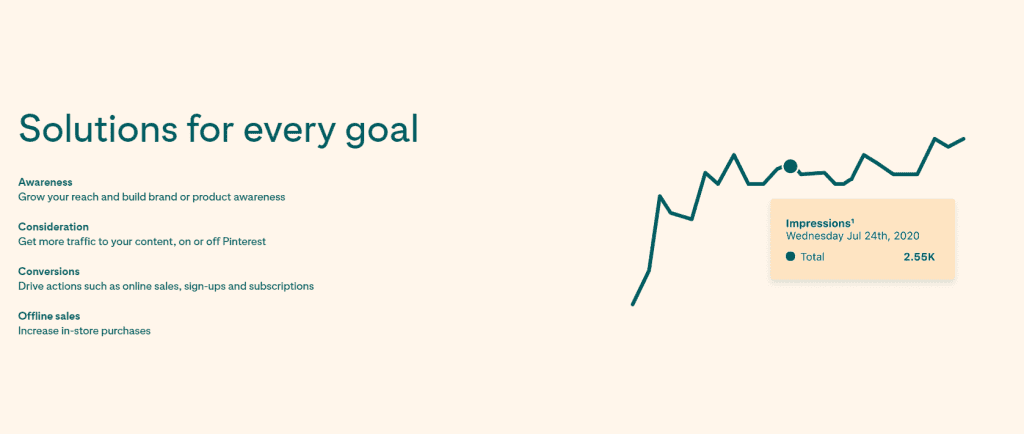
Understanding Pinterest Ads
We understand that Pinterest Ads are a powerful tool for getting our content in front of a more targeted audience. By creating Promoted Pins, we can ensure that our message stands out and reaches potential customers who are already seeking inspiration and solutions on the platform. To set up a campaign, we access the ad manager, select a goal that aligns with our business objectives, and proceed with crafting our ad.
Targeting the Right Audience
It’s critical for us to target the appropriate audience to ensure our Pinterest advertising is cost-effective and impactful. We use Pinterest’s extensive targeting options to reach people based on their interests, demographics, and behavioural data. These precision targeting capabilities allow us to engage an audience that is more likely to be interested in our B2B products or services.
Measuring Ad Performance with Pinterest Analytics
We measure our Pinterest ad performance using Pinterest Analytics, a robust tool that provides insights into a variety of metrics. We pay close attention to details such as engagement rates, click-through rates, and the effectiveness of our targeting. Pinterest Analytics offers us concrete data to assess the success of our campaigns and identify areas for optimisation.
Integrating with Other Digital Marketing Channels
Splitting our text into at most two sentences per paragraph will make it easier to read.
When we consider the integration of Pinterest into our broader digital marketing strategy, it is vital to ensure seamless connectivity with other channels. This requires a deliberate approach to align the objectives and messaging across platforms for maximum impact.
Utilising Email Marketing
Incorporating Pinterest into our email marketing efforts can greatly enhance the visibility of our pins and boards. By embedding Pinterest links in email campaigns, we encourage subscribers to engage with our visual content. This not only drives traffic to our Pinterest profile but can also lead to higher conversion rates as our email recipients are directed to our merchandise or services through curated images.
Leveraging LinkedIn and Twitter
Our presence on LinkedIn is crucial for establishing professional credibility and networking within the B2B sector. We can share our Pinterest content on LinkedIn to showcase our company’s creativity and thought leadership. Similarly, the immediacy of Twitter serves as an advantageous channel to promote our Pinterest activities. By tweeting our pins and using relevant hashtags, we can increase our content’s reach and engagement within the B2B community.
Synergising with Google and SEO Efforts
The integration of Pinterest with our Google and SEO efforts is an area where we can significantly amplify our digital presence. Pinterest content can rank on Google, which means optimizing our Pinterest boards and pins with keywords is essential. Strategic use of keywords not only boosts our visibility within the Pinterest platform but also enhances our overall SEO rankings. Through meticulous keyword research and implementation, we optimise our pins to appear in search results, driving organic traffic to our website.
Analytics and Performance Measurement
In this section, we’ll dive into the effective use of analytics to track and measure the success of our Pinterest B2B campaigns. We’ll explore methods for monitoring traffic and user engagement and leveraging Google Analytics to gain deeper insights into our performance.
Tracking Traffic and User Engagement
Splitting our text into at most two sentences per paragraph will make it easier to read.
When we advertise on Pinterest, it’s essential to monitor how users interact with our pins. By utilising Pinterest’s built-in Analytics and Measurement tools, we can track a wealth of data. This includes:
Impressions: The number of times our pins have been viewed.
Saves: How often users are saving our pins to their boards.
Clicks: The total clicks on our pins, indicating users’ interest in learning more about our products or services.
This data informs us which pins resonate most with our audience, allowing us to refine our strategy and creative assets.
Using Google Analytics for Deeper Insights
For a more comprehensive analysis, integrating Google Analytics with our Pinterest account offers us deeper insights into the customer journey. We can track referral traffic from Pinterest and observe how these users behave on our website. Here’s what we specifically look at:
Bounce Rate: How relevant our content is to the Pinterest referrals.
Conversion Rate: The effectiveness of our pins in leading to meaningful actions, such as form submissions or purchases.
User Flow: This shows us the path Pinterest users take through our site, highlighting popular content and potential drop-off points.
By understanding these metrics, we can optimise our website and Pinterest content to better serve our intended audience and achieve our marketing goals.
Advanced Techniques and Tools
To refine our Pinterest strategy for B2B marketing, we need to consider the power of specialised tools and platforms. They enable us to create compelling visual content, analyse our performance, and integrate our e-commerce capabilities.
Exploring Third-Party Tools like Canva and HubSpot
Canva offers us a user-friendly design platform, which is critical when creating eye-catching visuals for our Pinterest boards. With its vast array of templates and graphics, we can easily produce brand-specific content that resonates with our B2B audience. On the other hand, HubSpot enhances our Pinterest campaigns by providing comprehensive analytics and marketing automation tools. By integrating HubSpot, we’re equipped to track our pin performance, understand audience engagement, and tailor our content strategy accordingly.
Incorporating Shopify and Adobe for Ecommerce
When expanding our B2B marketing onto Pinterest, leveraging Shopify allows us to seamlessly integrate our product catalogue. With the ability to create shoppable pins, we’re directly connecting our audience with our ecommerce platform, facilitating a smoother purchasing process. Utilising Adobe’s suite of tools, especially for image editing and graphic design, ensures that our product imagery is of the highest quality. Adobe’s professional-standard software assists us in crafting visually stunning pins that can capture the attention of decision-makers within businesses.
Best Practices for B2B Companies on Pinterest
In our approach to utilising Pinterest for B2B advertising, we focus on producing relevant content, adhering strictly to platform guidelines, and ensuring our presence evolves with the platform for sustained longevity.
Maintaining Relevancy with Content
Splitting our text into at most two sentences per paragraph will make it easier to read.
To thrive on Pinterest, we curate content that resonates specifically with our audience. This involves presenting case studies, examples of project implementations, and industry-specific infographics. The content we share is designed not only to inform but also to inspire our professional peers by highlighting innovative approaches. By aligning our visual content with the interests of B2B clients, we enhance our brand’s relevance and engagement on the platform. For instance, when sharing Pinterest marketing strategies, we ensure the visuals depict clear, actionable insights that a B2B company can immediately comprehend and consider applying.
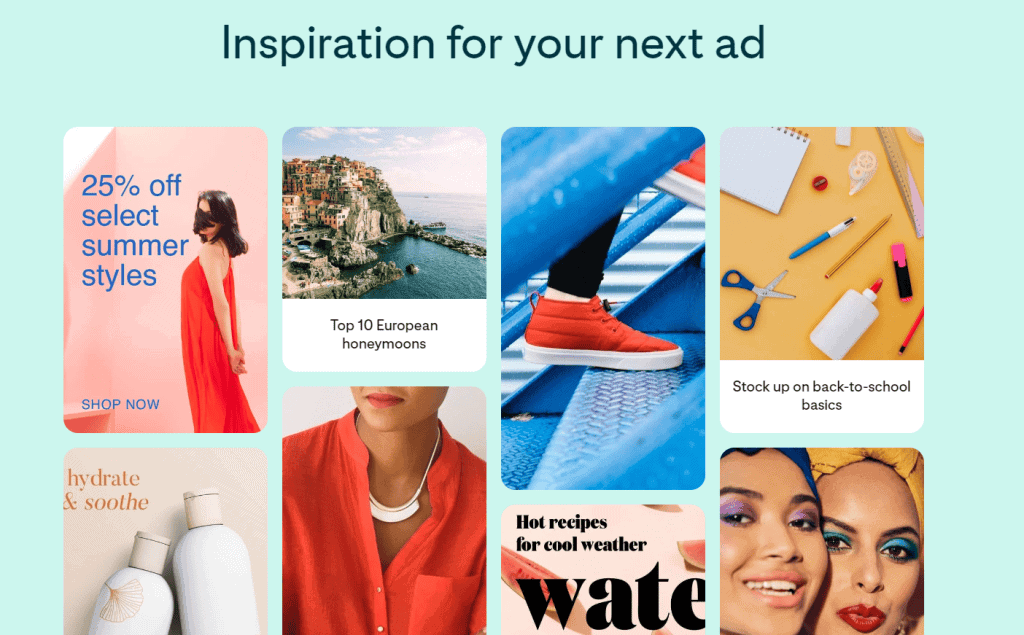
Adherence to Pinterest Guidelines
Our utilisation of Pinterest is conducted with a commitment to the platform’s guidelines to maintain an admirable standard. We review the Pinterest Business Community Standards regularly and tailor our pins accordingly. It is core to our practice that every piece of content we share, from infographics to image carousels, is in compliance with these stipulations. This diligence protects our brand’s reputation and assures a positive experience for our viewers.
Longevity and Evolving with the Platform
In our journey with Pinterest, we prioritise adaptability to sustain and grow our presence. This means we stay informed about emerging trends and algorithm updates, continually refining our strategy. Embracing innovation, we integrate new features like Pinterest Analytics to garner deeper insights into our performance. Our optimisation efforts for B2B marketing on Pinterest are an ongoing process, ensuring we remain a relevant and influential voice within our industry.
Frequently Asked Questions
In this section, we address key inquiries you may have about employing Pinterest for B2B advertising, providing insights into best practices and strategic advantages.
What are some successful case studies of Pinterest used for B2B advertising?
Businesses have found success on Pinterest by using it as a channel to reinforce their brand narrative and engage with other businesses. For example, Staples has effectively utilised Pinterest, leveraging the platform to extend their reach within the business community through tailored content.
What strategies are most effective for B2B marketing on Pinterest?
Effective strategies include optimising your profile with relevant keywords and creating high-quality, visually appealing pins. Collaborating with influencers and industry leaders is also a strategic move detailed by Prorevgro, which can significantly amplify your Pinterest presence in the B2B space.
How does Pinterest compare to other platforms for B2B marketing effectiveness?
Pinterest provides a unique avenue for B2B marketing by enabling businesses to showcase their brand through visually engaging content. Although it may not be the go-to platform for all B2B marketers, its niche appeal can be more effective for industries where visual representation is key, according to Serpstat.
In what ways can Pinterest be leveraged for advertising in business-to-business contexts?
We can use Pinterest for advertising by focusing on educational content, industry insights, and thought leadership. This approach helps position our business as an authoritative voice in the industry. It is conducive to B2B engagement, as outlined by EverywhereMarketer.
What content formats on Pinterest work best for B2B engagement?
Infographics, how-to guides, and Pins featuring whitepapers or case studies are content formats that have shown to resonate well with B2B audiences on Pinterest. Content curation focusing on these formats is optimal for engagement. It captures the attention of business clients looking for informative and practical insights.
Why should businesses consider Pinterest as part of their B2B marketing mix?
Pinterest’s growing user base and visual focus provide businesses with a unique platform to reach their audience through creative and inspiring content.
Employing Pinterest in their marketing mix can result in greater brand awareness and lead generation opportunities. Insights from Godelta echo this sentiment.
